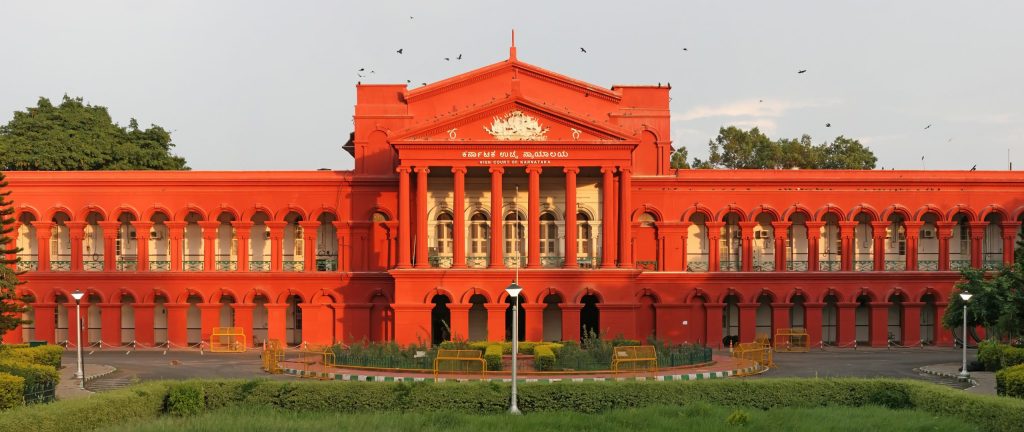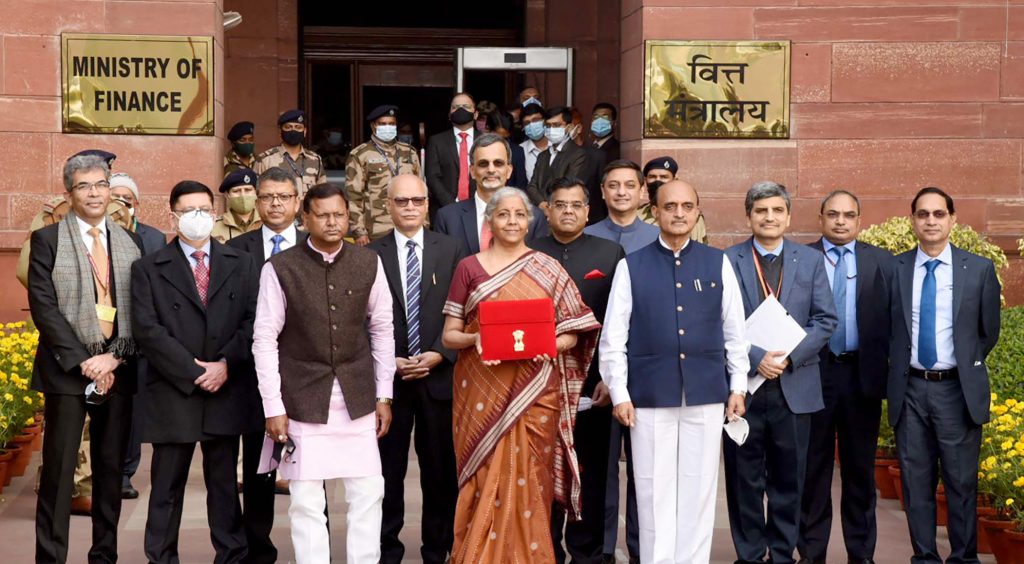Now Reading: Custodial Deaths in India: An Analysis
-
01
Custodial Deaths in India: An Analysis
Custodial Deaths in India: An Analysis
Introduction
The word custody implies guardianship and protective care. Even when applied to indicate arrest or incarceration, it does not carry any sinister symptoms of violence during custody. No civilized law postulates custodial cruelty – an inhuman trait that springs out of a perverse desire to cause suffering when there is no possibility of any retaliation; a senseless exhibition of superiority and physical power over the one who is overpowered or a collective wrath of hypocritical thinking. It is one of the worst crimes in the civilized society, governed by the rule of law and poses a serious threat to an orderly civilized society. Torture in custody flouts the basic rights of the citizens and is an affront to human dignity.
Prisoners have human rights and prison torture is the confession of the failure to do justice to living man. For a prisoner, all fundamental rights are an enforceable reality, though restricted by the fact of imprisonment. Simply stated, the death of a person in custody whether of the Police or Judicial will amount to Custodial Death. The figures of NHRC show a total of 894 deaths in judicial custody.The letter, signed by the joint registrar (Law) of the National Human Rights Commission, stated that Uttar Pradesh leads the chart of deaths in judicial custody by a significant margin, with 204 deaths recorded in the period between 1 January 2017 and 2 August, 2017. The state was followed by Punjab with 76 deaths and Bihar with 64 deaths.Needless to say, a large number of custodial violence incidents go unreported. Arun Shourie once observed: The victims were invariably poor. Several of them hauled in on no formal charges at all. Even in the case of persons who were arrested, in an overwhelmingly large number of cases they were all accused of petty offences n fact, the victims of custodial violence are people from poor and backward sections of the society with little political or financial power to back them. Personal enmity, caste and political considerations and at times pecuniary benefits become important considerations for custodial deaths rather than investigation of cases.
Judicial Custody death
Before I put down my views on custodial deaths I would like to quote Alexander the Great that “If I can love myself despite of my infinite faults, how can I hate anyone at the glimpse of few faults”. Our constitution has enshrined fundamental rights to guarantee certain basic rights and liberties to our citizens and several institutes are making a praiseworthy effort to assure the reach and exercise of such rights by the common man. In the case of judicial custody the accused is sent to jail (prison) where for the purpose of investigation the police requires the permission of jail authority. So the deaths that occur in jail while in Judicial Custody are called as judicial custody death. Judicial custody deaths are basically classified into two parts that are Natural death and Unnatural death. In the case of Natural death the SDM has the right to conduct magisterial enquiry under 176 CrPc and in such case no compensation is provided by state. But the exception is Tamil Nadu and Andhra Pradesh as they provide a compensation of Rs. 20,000 in the case of Natural death also. The Unnatural deaths are consider under four sub points that are Suicide (309 IPC), Accidental death (304A IPC), Murder (302 IPC), Medical Negligence (304 IPC). In such cases the Judicial Magistrate under 176CrPc conduct magisterial enquiry and in all such cases compensation are provided to the victims. The SC/ST are given more compensation in case of death in jail.
Following guidelines are followed while conducting the magisterial enquiry in case of custodial death
- Magisterial enquiry is conducted at the earliest without undue delay.
- The Enquiry magistrate should visit the place of occurrence to the acquaintance with the facts on ground. During the visit to the scene of crime, the Enquiry Officer should make an attempt to identify natural witnesses who are likely to have been present at the scene of crime. Enquiry Officer should take them into confidence and try to record their statements.. The motive so given should be thoroughly investigated for its veracity or otherwise.
- A public notice is issued through the vernacular newspapers to inform witnesses concerned with the enquiry. The enquiry magistrate should ensure that the information reaches all concerned particularly the close relatives of the victim. A free and fair opportunity should be given to the relatives of the victim while recording their statements.
- The magisterial enquiry should cover the following aspects.
- a) The circumstances of death
- b) The manner and sequence of incidents leading to death
- c) The cause of death
- d) Any person found responsible for the death, or suspicion of foul play that emerges during the enquiry.
- e) Act of commission/omission on the part of public servants that contributed to the death
- f) Adequacy of medical treatment provided to the deceased.
5. The enquiry magistrate should examine and verify the following records.
a) Inquest Report
b) Post Mortem Report: It is seen that the Enquiry Officer does not analyze the Post Mortem report; no attempt is made to draw any inference about the genuineness or otherwise of the encounter. PM report should be thoroughly analyzed; if necessary, help of State FSL should be taken.
c) Viscera Analysis Report
d) Histopathological Examination Report
e) Final cause of death
f) MLC report/Initial Health Screening Report of the prisoner
g) Medical treatment records
h) Inquiry/Investigation report of the police
i) FIR/General Diary (GD) entries/any other relevant police records.
j) Ballistic examination reports of weapon and cartridges, if any, alleged to be used in the incident by the deceased.
k) Forensic examination report of ‘hand wash’ of the deceased.
l) The finger print expert report on finger print impression available on weapon alleged to have been used by the deceased.
6. The magistrate should examine family members and relative of the deceased, eye witnesses having information of the circumstances leading to Custodial death, doctors who have conducted the post mortem/provided treatment to the deceased, concerned police/prison officials, independent witnesses, co-prisoners and other such relevant persons.
Analytical study of the custodial violence
Human Rights are those fundamental rights that are inherent and inalienable for the survival of individual in the society. In the new millennium, by virtue of international declaration, it is the duty and the responsibility of the welfare state to protect these rights of individuals. The whole of constitutional machinery also aims at protecting the human rights. The Constitution of India, 1950 under Part III which deals with fundamental rights. These are also considered as the basic human values. All these rights are inconsonance with the Universal Declaration of Human Rights, 1948. Talking retrospectively, according to Montesque theory in India, there is separation of powers. Accordingly, there are three wings of the state, which play vital role for any type of tasks for the protection and preservation of human rights. These are legislative executive and judiciary. Besides this, press is considered as the fourth wing of the welfare state. In day-to-day life, the media is highlighting a lot of violation of human rights of citizens. .
It is astonishing fact that among all the violence, the most alarming problem in present millennium is of custodial death. A case pertaining to judicial custody death of Uttar Pradesh in which the Commission, on receiving information of the custodial death of a prisoner named Dhirender Singh in the District Jail, Jaunpur, called for a detailed report from the Government of Uttar Pradesh. The report that was received stated that certain Anti-Social elements had gone to the main gate of the District Jail on that date and had asked for an under-trial prisoner, Jaya Prakash Singh, on the pretext that they had to hand-over a letter to him. Jaya Prakash Singh went to the main gate, where the deceased was also present at that time. The ‘anti-social elements’ fired at Jaya Prakash Singh, but he escaped. However, a stray bullet hit the deceased in his stomach. He was rushed to the hospital where he was declared dead. The report further stated that the deceased had gone to the main gate to collect milk, bread and paper as he was authorized to do so. A detailed magisterial inquiry that was instituted to look into the matter arrived at the conclusion that there was negligence on the part of the jail authorities and that this had resulted in the death of Dhirender Singh.
In view of the findings of negligence/lapses on the part of the prison administration, the Commission issued a show cause notice to the State Government asking as to why immediate interim relief is not paid to the next of kin of the deceased. As no reply was received from the State Government in respect of the show cause notice, the Commission by its order awarded a sum of Rs. 75,000/- as immediate interim relief to the next of kin of the deceased.
While Going through a case in the NHRC which was related to the Judicial Custody death there was a person who was admitted to Jail and 5 days after entering the Jail he died in the custody. So the initial screening test of the prisoner was that a normal medical test was conducted for him and the person was under a treatment of heart blockage for past 3 years in a local hospital and if so was the case why was he admitted to Jail when they were aware that a proper treatment of him was going on in a hospital and even if he was admitted to Jail why was he not given proper treatment for his disease. The information that I could collect after talking to many people in NHRC was that the authority doesn’t take a proper screening medical test due to insufficient funds and many more reasons, which is actually a foul practice on the part of the authority.
While going through another case in NHRC regarding to Judicial Custodial death of UTP Bhairo Singh. The initial health screening report of deceased reveals that deceased was not suffering from any disease at the time of admission in the jail but he died the 2-nd day of entering in the jail due to Brain hemorrhage. According to the Post mortem report 4 abrasion of different size on elbow and ankle. The point here was that when the prisoner was bleeding from the mouth why was he not referred to the District hospital Mirzapur. I think there is negligence on part of the Authority as they are not able to record the actual initial screening report of the prisoners also according to the statistics of the prisoner statistics of India 2015 the total capacity of Jail in the country is 3,66,781 as reflected in Table 2 and the total number of inmates as on 31.12.2015 were 4,19,623 as reflected in Table 3 of the statistics. So this reflects that the number of inmates are more than the capacity in the jail this is also a drawback as proper care of the inmates is not possible as which is also the cause Custodial deaths.
Total Number of Jails in the Country : 1,401
Table 1
|
Central jails : 134 District jails : 379 Sub jails : 741 Women jails : 18 |
Open jails : 63 Borstal schools: 20 Special jails : 43 Other jails : 3 |
Total Capacity of Jails in the Country : 3,66,781
Table 2
|
Central jails : 1,59,158 (43.4%) District jails : 1,37,972 (37.6%) Sub jails : 46,368 (12.6%) Women jails : 4,748 (1.3%) |
Open jails : 5,370 (1.5%) Borstal schools: 1,830 (0.5%) Special jails : 10,915 (3.0%) Other jails : 420 (0.1%) |
Total Number of Jail Inmates as on 31.12.2015 : 4,19,623
Table 3
|
Male : 4,01,789 (95.7%) |
Female : 17,834 (4.3%) |
Occupancy Rate
Table 4
|
2013 – 118.4% |
2014 – 117.4% |
2015 – 114.4% |
|
Convicts : 1,34,168 (32.0% of total inmates) Male :1,28,428 (95.7% of total convicts) Female : 5,740 (4.3% of total convicts) |
Under trials: 2,82,076 (67.2% of total inmates) Male :2,70,160 (95.8% of total undertrials) Female :11,916 (4.2% of total undertrials) |
Recall the suicide by one of the accused in Delhi gang rape case within 72 hours in March 2013 in Tihar Central Prison underscore the need to understand the factors behind committing suicide in prison. While suicide is recognized as a critical problem within Jail environment, the issue of prison suicide has not received comparable attention. However for making meaningful analysis and to understand patterns from the suicide deaths occurring in prisons, it is essential to understand the age group of deceased, period of detention, time of committing suicide, place and manner used, medical history including mental health, environmental factors, any prior history of suicide etc. so that corrective measures could be devised to remove the factors that facilitates in commission of suicide.
In Indian context, suicide death accounts for almost 71% of unnatural deaths reported in prison. It is also to note that suicide in a prison can have long-term effects on its culture (i.e., cause high level of stress on staff and inmates that have to deal with the aftermaths of an inmate suicide). Survivors of suicide are also often at a higher risk of suicide as they deal with the grief of the loss of a loved one. The Hon’ble Supreme Court in Nilabati Beheracase asserted that the convicts, prisoner or under-trials are not denuded of their fundamental rights under Article 21 of the Constitution and there is a corresponding responsibility on the prison authority to make sure that person in custody are not deprived of the Right of Life. The state has the duty of care, to ensure that the guarantee of Article 21 is not denied to anyone. The state must take responsibility by paying compensation to the near and dear ones of a person, who has been deprived of her/ his life by the wrongful act of its agents.
Based on the legal pronouncement, the following points can be deducted:
1. Vicarious liability of the State-Since inmates in prison is under the safe custody of the state thus it is the responsibility of the state to ensure safety, security and wellbeing. IN case of any negligence or violation, the state is vicariously liable for the act of omission on the part of Jail Authority.
2. Liability under public Torts– As compared to civil liability under the laws of private torts, for violation of fundamental rights, the remedy Is not available in public law is not only to civilize public power but also to ensure the citizen that they live under a legal system wherein the right and interested shall be protected and preserved. The compensation is in the nature of the exemplary damages awarded against the wrongdoer for the breach of its public law duty.
3. Recovery of amount of compensation from wrongdoerThrough the state is responsible to pay compensation on account of principle of vicarious liability but it is entitled to recover the amount from wrongdoer or delinquent officials responsible for negligence or commission of act.
My ardent concern is that the State cannot debase bastilles by zoological bestiality inflicted on criminals. It is psychiatric nonsense and medical menace to inflict injuries as a healing process. It is nobly believed that criminals are made and not born, and are curably human and not irredeemably brutish. Crimes are the psychotic syndromes and medico-legal recipes inside prisons where social beings are kindled are not killed must heal patients suffering from this. But I will take a stand that “Why are prisoners still treated as alien in the lay mans land”. Our aim is to strive towards the goals of creating a just world where avoidable suffering and noxious negativity is extirpated and plentiful love, concerns overflows because every life in this world is painted by God and we are no one to make anyone’s life colourless. To boost the morale of all those who are travelling to end continuous human rights violation, Thomas Alva Edison said that, “I will not say that I failed 1000 times, I will say that I discovered there are 1000 ways which can cause failure.”
We still confide in our authority because they are trying fervently to doff the dust off their coats. They have the courage to lose the sights of the shore and by carrying this attitude only new oceans can be discovered.
Recommendation
The solution to the problem would as such lie in measures to prevent such details from custodial deaths, in fact, such violence itself, and reduce the number of custodial deaths to the extent possible in other circumstances by evolving efficient systems and procedure for prompt and adequate medical aid, where required, and reasonable preventive measures against accidents and suicide. At the same time, it would also be necessary to put such deaths in proper perspective to change the present public perception and establish administrative in the matter.









